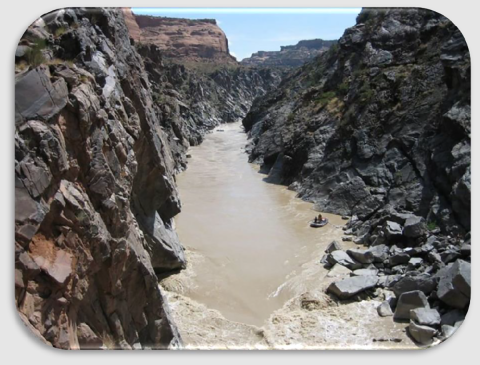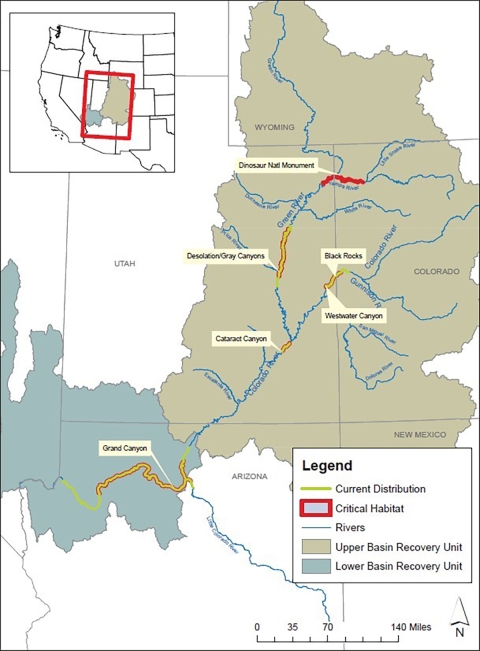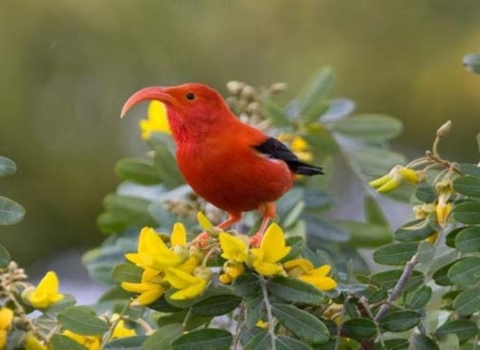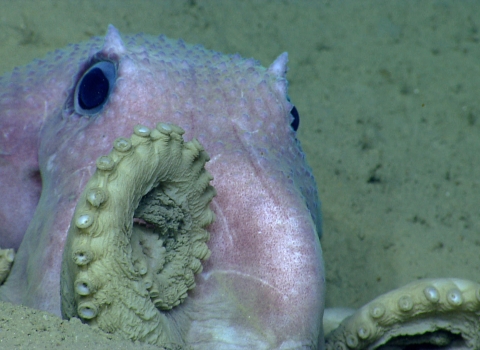DENVER — Thanks to the hard work of state, regional, Tribal and federal agencies, as well as private partners, significant progress has been made conserving and recovering the humpback chub. Following a review of the best available science, the U.S. Fish and Wildlife Service is announcing that it has reclassified the humpback chub from endangered to threatened under the Endangered Species Act (ESA). Today’s announcement follows the publication of the proposed rule in January 2020 and subsequent public comment period.
"Today's action is the result of the collaborative conservation that is needed to ensure the recovery of listed species," said Matt Hogan, Acting Regional Director for the Service. "Reclassifying this distinctive fish from endangered to threatened is the result of many years of cooperative work by conservation partners in the Upper Colorado River Endangered Fish Recovery Program and the Glen Canyon Dam Adaptive Management Program. We thank everyone involved for their efforts as we look toward addressing the remaining challenges in the Colorado River Basin."
The humpback chub was first documented in the Lower Colorado River Basin in the Grand Canyon in the 1940s and the upper Colorado River Basin in the 1970s. It was placed on the list of endangered species in 1967 due to impacts from the alteration of river habitats by large mainstem dams. This fish is uniquely adapted to live in the swift and turbulent whitewater found in the river's canyon-bound areas. The fleshy hump behind its head, which gives the fish its name, evolved to make it harder to be eaten by predators, and its large, curved fins allow the humpback chub to maintain its position in the swiftly moving current.
The Upper Basin Recovery Program's conservation and management actions have resulted in improved habitat and river flow conditions for the humpback chub over the past 15 years. These efforts have increased the Westwater Canyon population to more than 3,000 adults and stabilized populations in Black Rocks, Desolation & Gray, and Cataract canyons. All populations in the Upper Basin have stabilized or increased, even as Lake Powell elevations have declined. Flow conditions have also improved during this period, as partners have refined flow management.
Water releases along the river continue to support this and other endangered species in the basin. In the Lower Basin population, there are now more than 12,000 individuals in the Little
Colorado River and the Colorado River at their confluence and increasing densities in the Grand Canyon's western end due to the receding Lake Mead exposing river habitat. Additionally, successful efforts to reintroduce humpback chub into Havasu Creek and upstream portions of the Little Colorado River have expanded their range.
Ongoing multi-stakeholder partnerships are managing flows to improve habitat conditions for listed and sensitive riparian riparian
Definition of riparian habitat or riparian areas.
Learn more about riparian species in the Colorado River Basin, even as storage in the lakes decline. Drought conditions in 2021 highlight the continued importance of multi-stakeholder partnership programs in managing river conditions for these species and human needs. The final rule to reclassify the humpback chub from endangered to threatened does not relinquish ongoing monitoring or conservation actions; ESA protection to the species continues under this status.
Humpback chub conservation partners include the states of Utah, Colorado, Arizona, and New Mexico, as well as Tribal agencies, water users, power customers, recreational interests, and environmental organizations. Federal partners include the Bureau of Reclamation, National Park Service, and the Western Area Power Administration. These partners have all played a critical role in reaching conservation milestones for the species.
In response to public comments, the final rule includes updated monitoring data demonstrating populations are more resilient than previously described. It also includes updated information on the potential effects of climate change climate change
Climate change includes both global warming driven by human-induced emissions of greenhouse gases and the resulting large-scale shifts in weather patterns. Though there have been previous periods of climatic change, since the mid-20th century humans have had an unprecedented impact on Earth's climate system and caused change on a global scale.
Learn more about climate change on water availability in the Colorado River Basin.
Ongoing threats to the humpback chub that Recovery Program partners are addressing include threats from non-native species such as smallmouth bass in the upper basin, uncertainties related to river flow, and the outcomes of a new cooperative agreement among partners in the Upper Basin Recovery Program.
As part of the final rule reclassifying the species from endangered to threatened, the Service has also finalized a 4(d) rule that reduces the regulatory requirements for state fish and wildlife agencies and other non-federal stakeholders when working to protect and recover the humpback chub. Examples of this work include creating refuge populations, expanding the range of the species, removing non-native fish species and creating catch-and-release fishing opportunities.
The final rule to reclassify the humpback chub from endangered to threatened is available for public inspection in the Reading Room today, and will be published in the Federal Register on October 18, 2021.
Learn more about the Colorado River Recovery Program.




